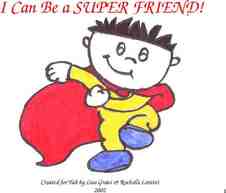SHOWTIME!!
19 Slides532.50 KB
SHOWTIME!!
Legal Issues in Training Day 28 Reference: Earle and Baechle - Chapter 25
The Perils of Litigation Increased litigation in society Competent trainers should become familiar with and practice the application of professional standards as a means to avoid possible litigation Proper training and certification by reputable organizations (e.g., ACSM and NSCA) Knowledge of and respect for the legal system enables one to become a more competent trainer and lessens the chances of being involved in a litigation
Tort Law Trainers are most likely to be sued under tort law as a result of negligence due to substandard performance Tort law is any wrongful act that does not involve a breach of contract and therefore may be cause for a civil suit
Five Aspects of a Successful Tort The basic elements of a successful tort are fivefold, in that once a legal duty (#1) has been established and this reality is coupled with the fact that a documented breach (#2) of that duty was the actual or proximate cause (#3) of verified insult, injury, or damage (#4), then compensation or damages (#5) can be awarded
If identified as a defendant in a lawsuit, during a testimony or deposition related to the lawsuit, trainers must be able to document their qualifications and competencies as well as the guidelines, standards, and procedures that they were following
Negligence Should be a primary concern of all trainers as well as employers of trainers who may be liable for negligence of the trainers under a legal doctrine called respondent superior Negligence is the failure to conform one’s conduct to a generally accepted standard
Four Elements of Negligence Duty - an obligation to conform to a certain conduct that reflects the standard of care Breach of Duty - conduct of trainer was not consist with the standard of care Causation - breach of duty must be the true cause of the injury or damage Damages - loss due to the injury which may be either economical or non-economical All four elements must exist for negligence to exist
Duty and the Trainer “Standard of Care” Established by examination of : The standard of practice developed and published by professional organizations such as ACSM’s Health/Fitness Facility Standards and Guidelines and NSCA’s Strength and Conditioning Standards and Guidelines The special or unique relationship that exists between the trainer and the client/athlete
Considerations to Reduce Liability Exposure Complete informed consent, assumption of risk, and agreement to participate documents Preparticipation screening and medical clearance Perform appropriate fitness testing Personnel qualification Optimal program design based on needs and goals Program supervision and instruction Facility and equipment setup, inspection, maintenance, repair, and signage (Safety!) Maintain records of inspection, maintenance, and repair
Considerations to Reduce Liability Exposure Emergency planning and response Client/athlete records and record keeping (maintain confidentiality) Equal opportunity and access Participation in strength and conditioning activities by children Supplements, ergogenic aids, and drugs Compliance to all relevant laws, regulations, and published standards
Considerations to Reduce Liability Exposure Trainers are “suspecticians” not “diagnosticians”; that is, although trainers may feel that a particular diagnosis is likely, they may not make medical diagnoses and prescribe treatment The proper scope of practice for trainers includes assessing, motivating, educating, and training clients/athletes; it does not entail diagnosing, treating, or counseling, which are responsibilities of licensed health care providers Emergency plans should be rehearsed (announced and unannounced) on a regular basis and followed up with timely critiques and corrective actions Having emergency oxygen and automated external defibrillators (AEDs) available reflects a professional commitment to an emergency response Have liability insurance, particularly if the trainer is a self-employed, independent contractor
NSCA’s Ethical Standards for Trainers Respect rights, welfare, and dignity of all individuals Provide equal and fair treatment Provide and maintain a safe and effective training environment Comply with all general laws Accept the responsibility for sound judgment Respect the confidentiality of an individual Be accountable
NSCA’s Ethical Standards for Trainers Refer individuals to more qualified professionals when appropriate Remain current through continuing education activities Avoid behavior and conduct that would constitute a conflict of interest or actions that adversely reflect on the profession Strive to safeguard the public by reporting ethical violations “It’s okay to be a tattle tailor or whistle blower”
Making the Protective Documents Enforceable Have a knowledgeable lawyer review the documents Protective documents are contracts and can only be signed by an adult; obtain parental signatures for minors Informed consent form should be completed and signed before any preparticipation screening or fitness testing occurs All documents should be administered properly allowing for adequate time for completion and administered by a well-trained employee who can explain the documents Protective documents should be stored in a secure place for an adequate amount of time, which may be up to four years after the relationship with a client/athlete has ended Exculpatory clauses or waivers of liability, which state that the client/athlete releases the trainer from any liability associated with negligence by the trainer, are generally unenforceable
Comments? Questions?
Thank You Very Much!!
























